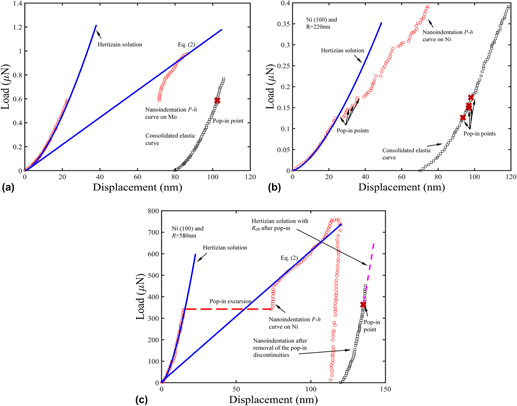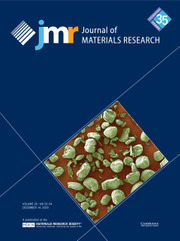Article contents
Single versus successive pop-in modes in nanoindentation tests of single crystals
Published online by Cambridge University Press: 24 May 2016
Abstract

From recent nanoindentation experiments, two types of pop-in modes have been identified: a single pop-in with a large displacement excursion and a number of pop-ins with comparable and small displacement excursions. Theoretical analyses are developed here to study the roles played by indenter tip radius, pre-existing defect density, heterogeneous nucleation source type, and lattice resistance on the pop-in modes. The evolution of dislocation structures in earlier pop-ins provides input to modeling a stochastic, heterogeneous mechanism that may be responsible for the subsequent pop-ins. It is found that when the first pop-in occurs near theoretical shear stress, the pop-in mode is determined by the lattice resistance and tip radius. When the first pop-in occurs at low shear stress, whether the successive pop-in mode occurs depends on how the heterogeneous dislocation nucleation source density increases as compared to the increase of the total dislocation density. The above transitions are found to correlate well with the ratio of indenter tip radius to the mean spacing of dislocation nucleation sources.
Keywords
- Type
- Articles
- Information
- Copyright
- Copyright © Materials Research Society 2016
Footnotes
Current address: 3M Company, St. Paul, MN.
Contributing Editor: Jürgen Eckert
This author was an editor of this journal during the review and decision stage. For the JMR policy on review and publication of manuscripts authored by editors, please refer to http://www.mrs.org/editor-manuscripts/.
A previous error in this article has been corrected, see 10.1557/jmr.2017.245.
References
REFERENCES
A correction has been issued for this article:
- 16
- Cited by
Linked content
Please note a has been issued for this article.



